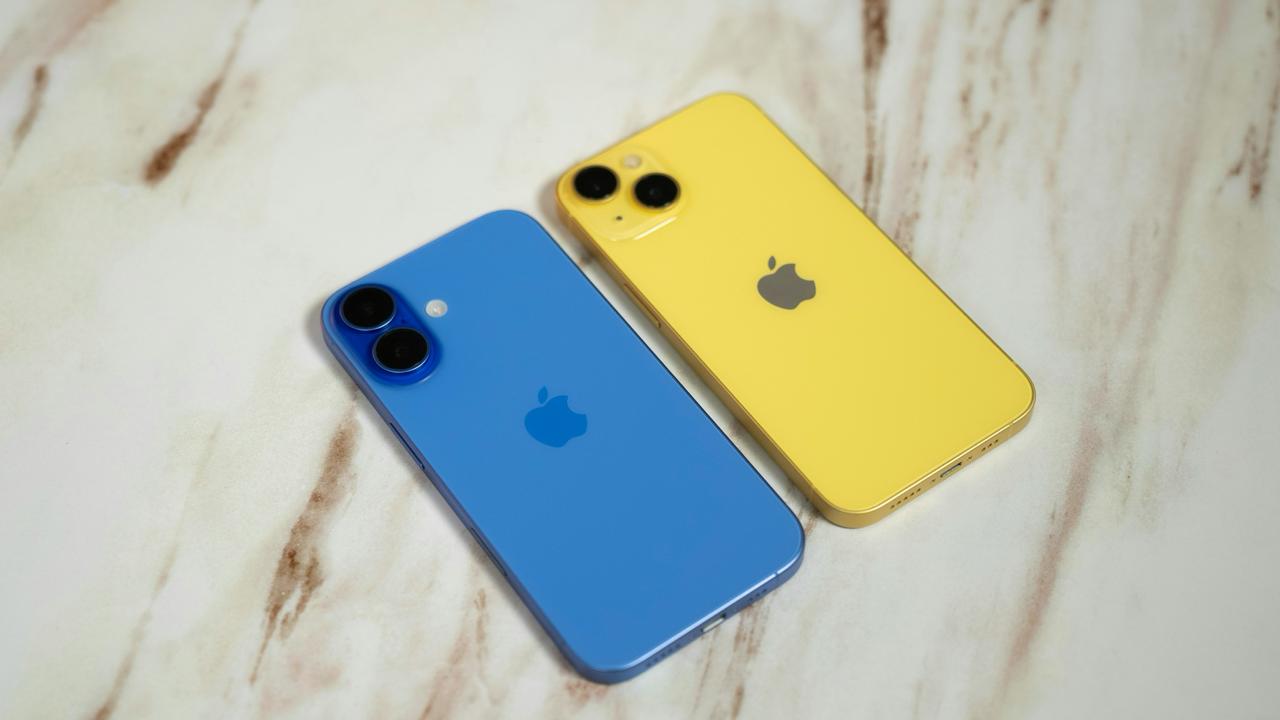Table of contents
Every autumn, Apple sparks a wave of discussion — how fresh will the lineup be, what will the upgrade affect, and how will the camera change this time? In this article, we will try to figure out which iPhone is better — 14 or 15, what the price of the iPhone 16 is, and which model combines the ideal balance of quality and cost.
A Brief Overview of the Main Changes
Apple follows a clear cycle: every year, we get both updated basic iPhones and advanced versions with the Pro label. However, with each new lineup, the border between these two worlds becomes more and more noticeable.
For example, starting with the iPhone 15 Pro, Apple is boldly betting on premium materials — a titanium body, more compact and lightweight proportions, and a new USB-C port. At the same time, each new basic model inherits the technology of previous Pro versions. This turns the basic versions into stable working gadgets, and the Pro versions into devices for those who need to get the most out of technology.
The Evolution of Basic iPhones — Key Differences
If you are choosing between the iPhone 15 or iPhone 16, or perhaps older versions, it is important to understand what changes have occurred in their internal processes and design. So, how have the basic versions of the iPhone transformed from generation to generation?
Performance and Chip
The iPhone 14 runs on the proven A15 Bionic chip, which is sufficient for basic tasks: from simple games to editing amateur photos. The 15th model features the A16, previously only available in the Pro version. It offers more stable productivity and energy efficiency.
With the release of the iPhone 16, the base lineup received the A18 for the first time — a modern chip produced using a thinner technical process. Thanks to it, the smartphone not only works about 15–20% faster, but also copes better with tasks under high load: games, 4K video and multitasking.
Design and Ergonomics
Comparing the iPhone 14 and 15 in terms of appearance is like looking for differences between twins. Both devices got an aluminum frame, tempered glass, and IP68 dust and water protection. But the 15th became more tactile: Apple softened the angles, made the glass matte, and rounded the frame a bit.
In addition, the smartphone has gained functionality previously available only in Pro versions, such as the interactive Dynamic Island area, which is responsible for notifications, music, and live app activity.

In the iPhone 16, the company has slightly changed the form factor — now the cameras are positioned vertically again, as in the iPhone X/XS. This is not just nostalgia: it is more convenient for shooting spacious videos. The color palette is also updated: ultramarine, teal, and pink add individuality. The device is now a gram lighter, but more importantly, it feels a little thinner and more balanced in the hand.
Main Block Cameras
The iPhone 14 provides two 12 MP cameras, which are enough for everyday photos. In the 15th model, the main module has been upgraded to 48 MP, significantly improving photo detail, especially in good lighting conditions.
At the same time, when comparing the iPhone 16 or 15, it is hard to find differences in the actual camera. The changes came from an improved chip. It processes images differently, which increases detail. Video recording is also top-notch: excellent stabilization and 4K support make the shots more professional.
Battery
While the iPhone 14 can play videos for 20 hours non-stop, the iPhone 16 can do it for 22 hours. As for battery capacity, it’s getting better little by little. For example, comparing the parameters of the models already mentioned, the difference between them is only about 200 mAh. The company is always improving the energy efficiency of the processor, which means that the smartphone heats up less and doesn’t need to be charged as often.
Changes Between iPhone Pro Models
With the release of the iPhone 14 Pro, the company showed the direction of development for the Pro series. In this smartphone, Apple used a 48 MP camera for the first time and replaced the usual “notch” with a dynamic area. The display protection has also been improved — it is now stronger and less prone to glare.

With the iPhone 15 Pro, Apple took a radical step — using a titanium case instead of stainless steel. This made it almost 20 g lighter. The iPhone 16 Pro received a new A18 Pro chip and an updated heat dissipation system. This resulted in increased performance and longer battery life, even under heavy load. The price of the iPhone 16 Pro is also influenced by other features that first appeared in 2024: a customizable button and new artificial intelligence options.
Bottom Line
When deciding which iPhone to buy — 16 or 15 — it’s worth starting by figuring out your needs and habits. For example, the iPhone 14 can be looked at as a budget-friendly and reliable smartphone. The iPhone 16 will please those who want the latest tech. And the iPhone 15, with its key updates, is considered the golden mean.
You can find your model at iSpace, the official Apple store in Uzbekistan. Consultants will help you choose the right iPhone for your needs and budget. And on the website, you will always find the latest products, promotions, and other Apple gadgets.
Read also:
iSpace Master Class: learn how to shoot masterpieces on an iPhone
How to delete an object from a photo on an iPhone without installing third-party apps
Control the iPhone with your eyes. Find out how the new iOS 18 feature works
Subscribe to the newsletter and be the first to learn about the store's new promotions and special offers!
